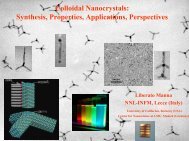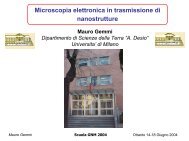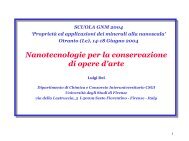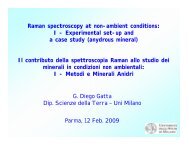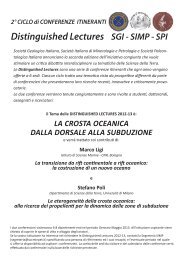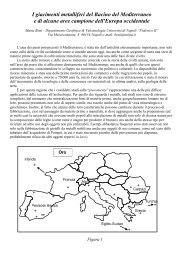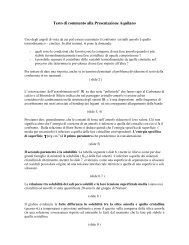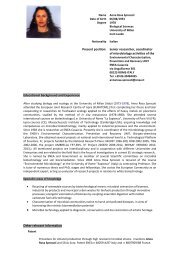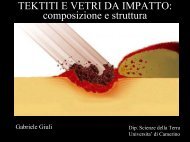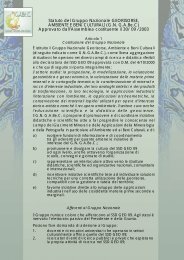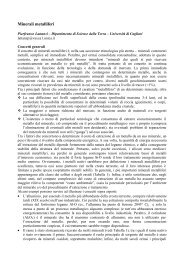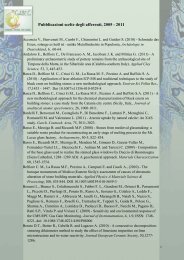Hans-Peter Schertl Institute of Geology, Mineralogy and Geophysics ...
Hans-Peter Schertl Institute of Geology, Mineralogy and Geophysics ...
Hans-Peter Schertl Institute of Geology, Mineralogy and Geophysics ...
You also want an ePaper? Increase the reach of your titles
YUMPU automatically turns print PDFs into web optimized ePapers that Google loves.
<strong>Hans</strong>-<strong>Peter</strong> <strong>Schertl</strong><br />
<strong>Institute</strong> <strong>of</strong> <strong>Geology</strong>, <strong>Mineralogy</strong> <strong>and</strong><br />
<strong>Geophysics</strong><br />
Ruhr-University Bochum<br />
44780 Bochum<br />
Germany<br />
hans-peter.schertl@rub.de<br />
A time machine for rocks: Cathodoluminescence microscopy <strong>of</strong> metamorphic <strong>and</strong><br />
magmatic minerals<br />
There is hardly anyone who has not dreamed <strong>of</strong> traveling back in time with a time machine. The<br />
cathodoluminescence (CL) microscope is able to uncover <strong>and</strong> visualize growth structures <strong>of</strong><br />
metamorphic <strong>and</strong> magmatic minerals that were generated during their formation. These structures,<br />
<strong>of</strong>ten not detectable using other imaging methods, open a window into the past <strong>and</strong> are thus <strong>of</strong> vital<br />
significance for unraveling geological processes. Knowledge <strong>of</strong> the detailed textural characteristics <strong>of</strong><br />
rock-forming minerals is <strong>of</strong> invaluable help, for example in the derivation <strong>of</strong> more precise <strong>and</strong> detailed<br />
PT-paths or in tracing crystallizing processes in melts, <strong>and</strong> thus for underst<strong>and</strong>ing the evolution <strong>of</strong><br />
geodynamic processes involving any metamorphic or magmatic rock. This talk focuses on important<br />
examples <strong>and</strong> also documents that CL microscopy <strong>of</strong> thin sections is an important pathfinder prior to<br />
further characterization <strong>of</strong> minerals by other techniques.
How do mountains form? The critical evidence from small-scale petrological<br />
observation<br />
The present surface <strong>of</strong> the Earth shows the results <strong>of</strong> rifting, drifting <strong>and</strong> colliding lithospheric<br />
plates. Modern modeling techniques demonstrate how large portions <strong>of</strong> orogenic belts can be<br />
subducted <strong>and</strong> metamorphosed in the Earth´s interior, before making their way back to the<br />
surface. However, what is the data base that these pictures <strong>of</strong> large-scale mountain-forming<br />
processes are derived from? Only through a very careful <strong>and</strong> detailed investigation <strong>and</strong><br />
interpretation <strong>of</strong> observations on a sub-millimeter scale is it possible to generate the<br />
information necessary to model <strong>and</strong> underst<strong>and</strong> large-scale orogenic processes. We should<br />
bear in mind that many fundamental investigations were only made possible with the use <strong>of</strong><br />
the polarizing microscope, which remains a fundamental tool in geosciences. This talk<br />
highlights the tremendous impact <strong>of</strong> petrological observations on small scale microscopic<br />
features for underst<strong>and</strong>ing global geodynamics.



